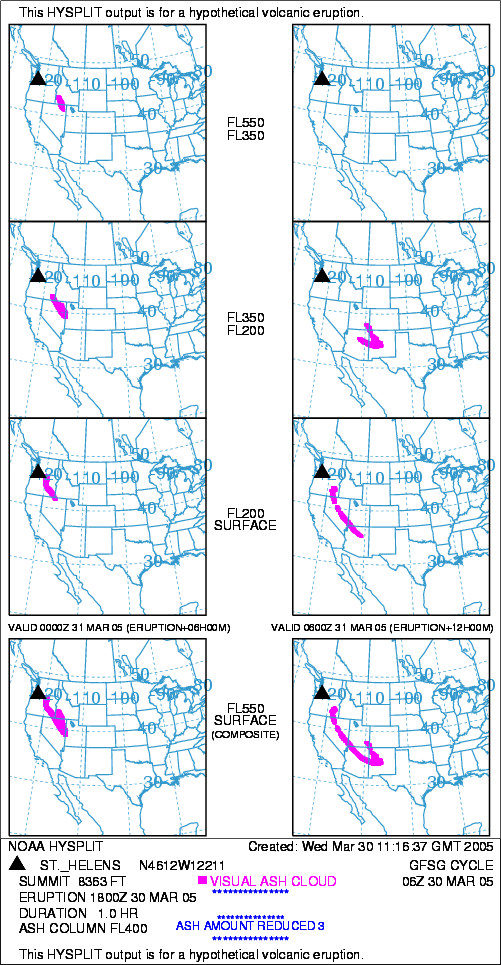
Volcanic Ash Modeling History NOAA volcanic ash dispersion product. HistoryFollowing the 1980 eruption of Mount St. Helens, a NOAA - Federal Aviation Administration (FAA) Memorandum of Understanding (MOU) on Volcanic Hazards Alert became effective in 1988. ARL's contribution was to provide forecast trajectories. However, trajectories are limited in that they only provide a representation of the transport paths of single air parcels, rather than a simulation of the complex transport and dispersion of a 3-dimentional volume of ash particles. Hence, the NOAA Air Resouces Laboratory developed the Volcanic Ash Forecast Transport And Dispersion (VAFTAD) model. In 1992 VAFTAD was transferred to operations at the NOAA National Weather Service (NWS). The model output format (see image to right) had been developed in consultation with the FAA. In the late 1990s a network of Volcanic Ash Advisory Centers (VAAC) was established by the International Civil Aviation Organization (ICAO). Two of the VAAC are operated by NOAA. The ICAO format of the graphical dispersion forecast was initially that of VAFTAD. In 2005 the ARL-developed Hybrid Single-Particle Lagrangian Integrated Trajectories model (HYSPLIT) replaced VAFTAD at the NWS. In 2007, the ICAO-formatted graphical product changed from the "VAFTAD-format" (2 pages, 8 plots per page, 12-h, 24-h, 36-h, and 48-h forecasts) to the "Volcanic Ash Graphic" (VAG) format (1 page, 4 plots per page, observation, 6-h, 12-h, and 18-h forecasts) to make the information in the text Volcanic Ash Advisory and the graphic (VAG) identical. At the same time, ICAO did not specify format requirements for dispersion model output, hence the NWS retained the "VAFTAD-format". ICAO documentation including an example VAG and a description of the VAAC duties are given in the "International Standards and Recommended Practices, Annex 3 to the Convention on International Civil Aviation, Meteorological Service for International Air Navigation" available from ICAO. For example VAG, see recent Washington and Anchorage products. |
|
|
|